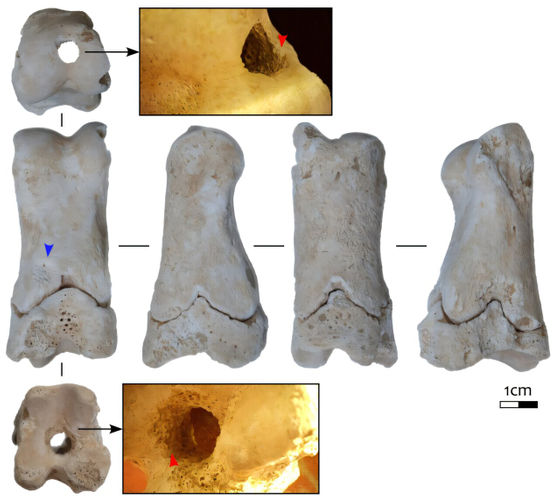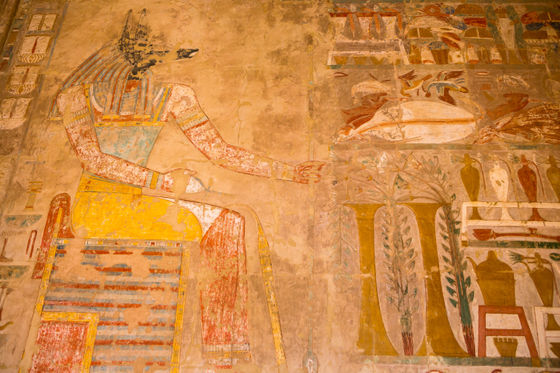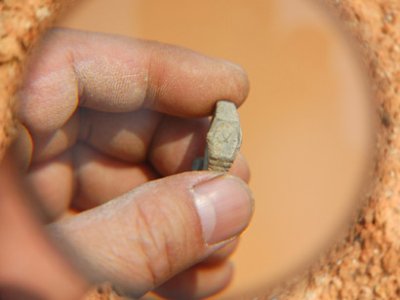Ancient Egyptian 'police' may have used small whistles made from cow bones

Archaeologists in Egypt have discovered a 3,300-year-old flute made from cow bone, and have successfully created a replica that actually plays.
International Journal of Osteoarchaeology | Wiley Online Library
A tiny cow bone whistle may have been used by ancient Egyptian 'police'
https://phys.org/news/2025-09-tiny-cow-bone-ancient-egyptian.html
Tiny Bone Whistle May Have Been Used by Ancient Egyptian Cops 3,300 Years Ago : ScienceAlert
https://www.sciencealert.com/tiny-bone-whistle-may-have-been-used-by-ancient-egyptian-cops-3300-years-ago
The following artifacts were discovered by a research team led by archaeologist Michelle Langley of Griffith University in Australia.

The bone was a young cow's finger bone, just 6.3cm long. It had no other alterations other than a single hole drilled through it. The clean, straight hole led Langley and his colleagues to believe it was intentionally drilled, which led them to speculate about its intended purpose.
Possible uses include decorative ornaments, amulets, toys, handles, or even hunting whistles. However, the theory that it was an ornament was rejected because 'ancient Egyptians were skilled in decorative techniques, so it would be odd for it to have only one hole,' and the theory that it was a toy or handle was rejected because 'there were no signs of wear from continued use,' and ultimately the hypothesis that the bone was used as a whistle remained.
So, Langley and his colleagues created a replica using modern cow bones and blew air into the hole, which produced a loud, high-pitched sound, as can be seen in the video below. This led them to conclude that 'this artifact was likely used as a flute.'
The researchers found no evidence of hunting in the area where the artifact was discovered, and if it was for hunting, it would have imitated the calls of birds. This makes it unlikely that it was a hunting whistle. The simple tone of the whistle also ruled out the possibility that it was a musical instrument.
On the other hand, the remains were discovered in a building that is believed to have been a guard's quarters or garrison, and since the royal tombs are nearby and security would have been tight, it is believed that the building was probably used as a messenger by a 'police'-like entity guarding the area.

'This research highlights the value of studying seemingly mundane objects from a vibrant culture,' Langley and his colleagues said. 'Not everything made and used during the Egyptian dynasties was crafted from materials that were heated, transformed, and shaped. Even simple bones can hold important clues to Egypt's past.'
Related Posts:
in Science, Posted by log1p_kr







